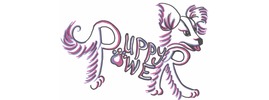|
Earlier this week, Oakley (my rottweiler) disappeared into the bush for a few minutes and came back crunching on something that sounded like bone. He looked pretty proud of himself, but I knew it was probably something I didn't want him to have - and likely something I didn't want to touch! We weren't far from home anyways, so I let him carry it home so I could a) grab a really high value reward (lunch meat) to give him if he dropped it/trade for if he didn't just offer the drop in the first place; and b) grab a few plastic bags to pick the item up with after he dropped it. He spit it out willingly and scored some meat and if you want to see what he spit out, click the button below - WARNING if you don't want to see a dead animal part, don't click the button! One thing I've found with my dogs (and dogs in general) is that they really aren't grossed out by anything; in fact, the nastier something is to us humans, the more valuable it usually is to the dog. Most of these nasty things turn up when we aren't prepared and they usually aren't things we regularly practice asking our dogs to drop, which is why it's a good idea to build your "drop it" cue with a higher value items and practice it regularly with a variety of items so it's there when you need it. I will be discussing in Part II how to get a reliable drop it cue, but for this post I am just going to say if you don't have a good drop cue, trading for something higher value is going to give you best results.
What not to do:
All of the above scenarios can be avoided by having a reliable drop it cue. You will be less likely to panic, run at your dog and shout if you are confident that your dog will drop items on command. You also won't give your dog a chance to turn it into a game of chase if you teach them to drop items on command (they younger they learn it and less chances they have to turn it into a game of chase, the better). Lastly if your dog is happy to drop items and is expecting to get something better in return, they won't be guarding items in the first place. Any time you try to take something from your dog while trying to use intimidation you are creating a negative association with the situation, and the next time it happens you will likely see more avoidance and/or defensive behaviour, which will cause it to become harder to get items away each time. The reason I have mentioned to trade for something higher value is that you want the dog to be happy to give the item up - dogs don't guard things when they know they are going to get something better. They do appear to guard more fiercely when they are being defensive and have a negative association with having things taken away. Many owners don't realize that they actually create or exacerbate guarding behaviour by punishing or intimidating their dogs. Once again please consult a qualified positive reinforcement trainer for hands-on help if you are seeing guarding behaviour. This post is NOT intended as a fix in resource guarding cases. Check back soon for "Drop It" Part II: How to get it!
2 Comments
6/15/2017 11:05:40 am
This is a very informative post. I also have a pet dog and she would frequently bite some unusual things at home. I was clueless on how to handle whenever she would do that. However, after reading your post, I'll be sure to apply this guide with my own dog. I shouldn't be too hard and will be more understanding on her.
Reply
Leave a Reply. |
AuthorI am a dog owner and a trainer. Every day I learn something new from my dogs and I hope to share experiences that will help people understand their dogs better. Archives
March 2024
Categories |
© Samantha Dejong, B.Sc, CCUI, CTB.ccs, IPDTA-CDT
